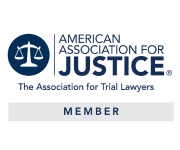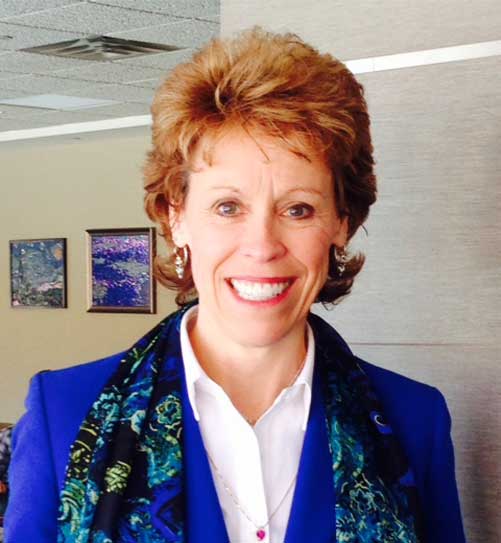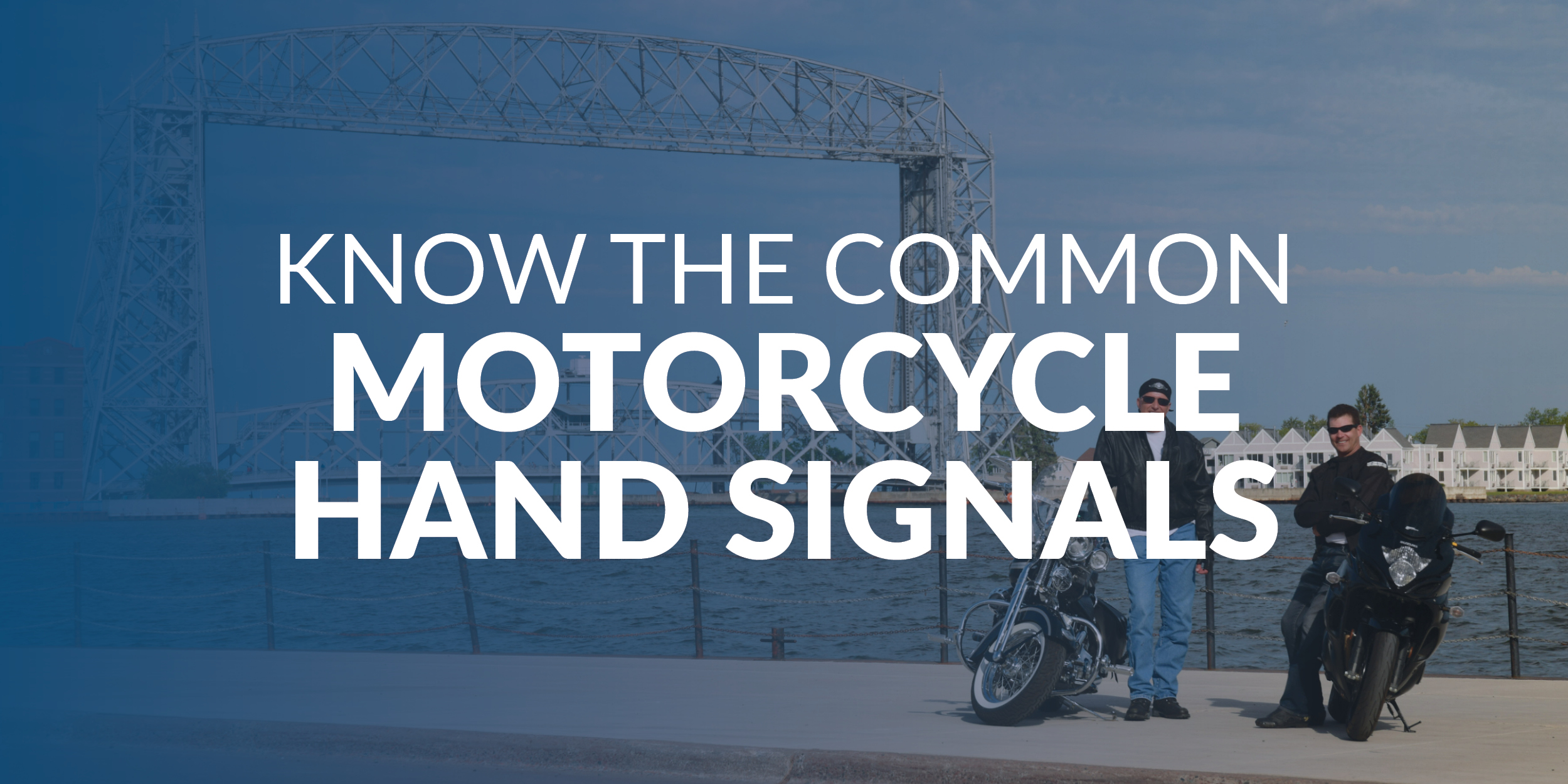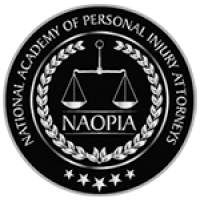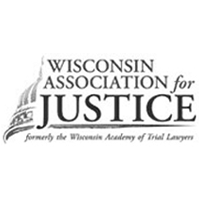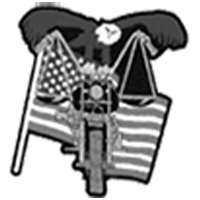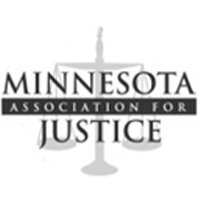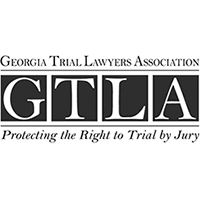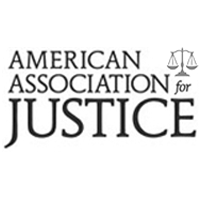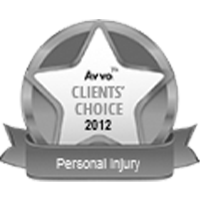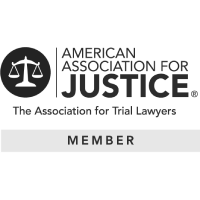Riding a motorcycle is one of life’s purest joys. It’s just you and the open road. Plus, all the other drivers who are generally unfamiliar with how to share the road with motorcyclists. We’ve all seen the “Start Seeing Motorcycles” bumper stickers, but seeing is not enough. Knowing how riders communicate can help drivers anticipate what a single rider or group of riders will do next – and that knowledge may just avoid a catastrophic accident.
Motorcycle riders use these 16 common motorcycle hand signals to communicate with one another. They can also clue drivers into riders’ intentions so that everyone can share the road safely. Note: all signals will be performed with the left arm, as the right hand must stay on the throttle to keep the engine running.
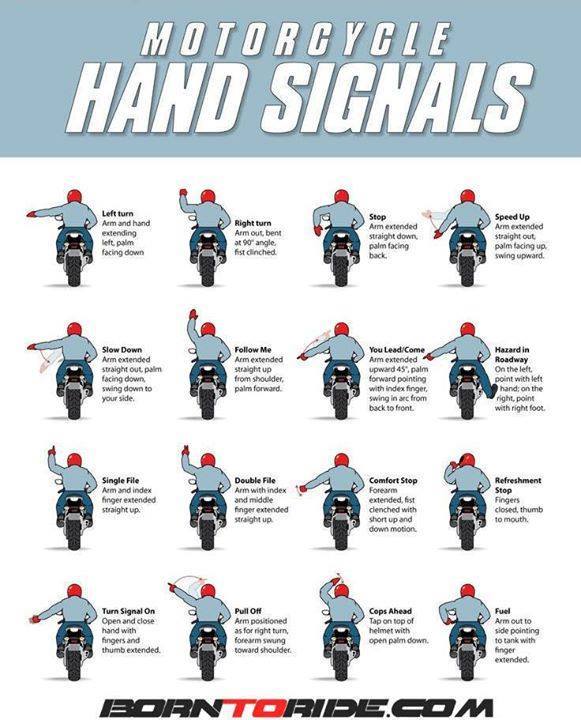
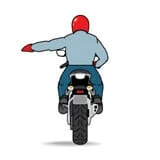
Left Turn – When a rider stretches their left arm out with their palm facing down, it indicates they’ll be turning left ahead. Watch for them to slow down and allow them time and space to complete the turn safely.
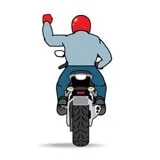
Right Turn – A left arm bent upwards at 90º with a clenched fist indicates the rider will be turning right ahead. Again, watch for the rider to slow down and allow them time and space to complete the turn safely.
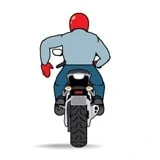
Stop – Motorcycle brake lights are bright red, but since they’re smaller than a car’s, they can be easier to miss. When a rider extends their left arm bent down at 90º with an open palm, they’re communicating that they’re coming to a stop. Please slow down and come to a complete stop with plenty of space between your vehicle and the bike.
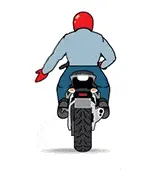
Speed Up – If a rider wants fellow riders in their group to speed up, they’ll raise their left arm upward with their palm facing up. Note: they’re not telling you or other cars to speed up, just the riders in their group. If you see this motion, know the group will start accelerating.
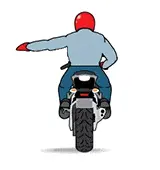
Slow Down – This is another signal riders use to tell their group to adjust speed. In this case, a left arm moving downward with an open palm means the group will be slowing down. When a motorcyclist eases off the throttle, their bike will decelerate without engaging the brake light. If you see this hand signal, know the rider or group will slow down. If you’re following a rider or group, pay attention and match their speed to avoid a rear-end collision.
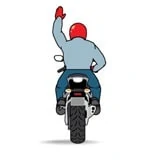
Follow Me – When people ride together, they maintain order by appointing and following a leader. From time to time, leaders will switch to allow for breaks. If you see a rider raising their left arm with the palm facing forward, a new leader will move to the front of the group. The other riders will allow the leader to take the lead position and may shift to allow for passing.
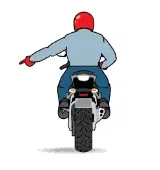
You Lead/Come – If a rider points directly to a fellow rider’s bike and then points forward, they’re assigning that rider to take the lead. Watch for the new leader to accelerate toward the front of the group. If you want to pass the group, please wait and allow time for this leadership transition to take place before you take action.
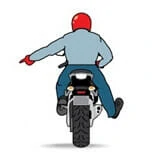
Road Hazard – Debris or damage on the road can be extremely dangerous to motorcycles, and riders may have to make quick maneuvers to avoid potholes, rocks, trash or any other road hazards. Riders will point with their left arm to indicate a road hazard to their left or their right foot to indicate a road hazard to their right (because their right hand must remain on the throttle).
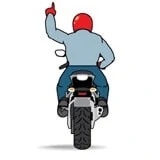
Single File – A left arm raised with the index finger pointed upward tells a group of riders to move to a single file line. If you see this gesture, riders will merge into a single line. Follow from a safe distance and allow this transition to take place before taking any action to pass by the group.
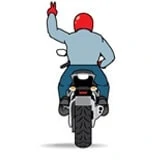
Double File – Similar to the single file signal, but with two fingers pointed upwards, this signal tells riders to move to ride two-by-two. They’ll separate into two lines and take up more space on the road. Follow from a safe distance and allow this transition to take place before taking any action to pass by the group.
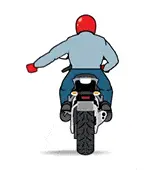
Comfort Stop – Riding a motorcycle is incredibly fun and exhilarating, but long rides can get uncomfortable. If someone in a group of riders needs a stretch break, they’ll extend their left arm and move their fist up and down. The group will stop on the shoulder or pull off the road when it’s safe to do so. If you see this signal, know the riders will be slowing down soon.
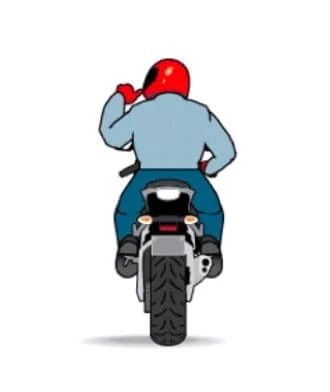
Refreshment Stop – Riding is thirsty work, and it’s not easy or safe to drink while riding, though hydration packs with long drinking tubes certainly help! If a rider wants to stop for a drink or snack break, they’ll make a “thumbs up” gesture and point toward their mouth or helmet. If you see this signal, know the riders will be slowing down soon.
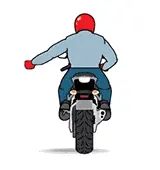
Turn Signal On – Fun fact about motorcycles: turn signals don’t turn off automatically the way they do in cars. Riders must turn the signal off manually after completing a turn, but it’s easy to forget. If a rider notices someone has left their turn signal on, they’ll extend their left arm and spread their fingers out repeatedly until the other rider understands.
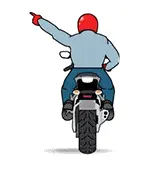
Pull Off – Waving an upraised left arm with the index finger pointing indicates that a rider will be pulling off the road for something other than a refreshment or comfort stop. The group will take the next exit or pull to the shoulder as soon as it is safe to do so. Allow the group time to slow down and pull off safely.
While all drivers don’t have to be fluent in motorcycle hand signals, knowing the basics and understanding that riders are communicating with each other and fellow drivers helps keep the road safe for everyone.
When in doubt, give riders space. There’s room on the road for us all.
If you’re a motorcycle rider who has been involved in a crash, don’t hesitate to contact the attorneys at Schroeder & Mandel for a FREE consultation. As motorcyclists and legal experts, we can help you win the settlement you deserve.

